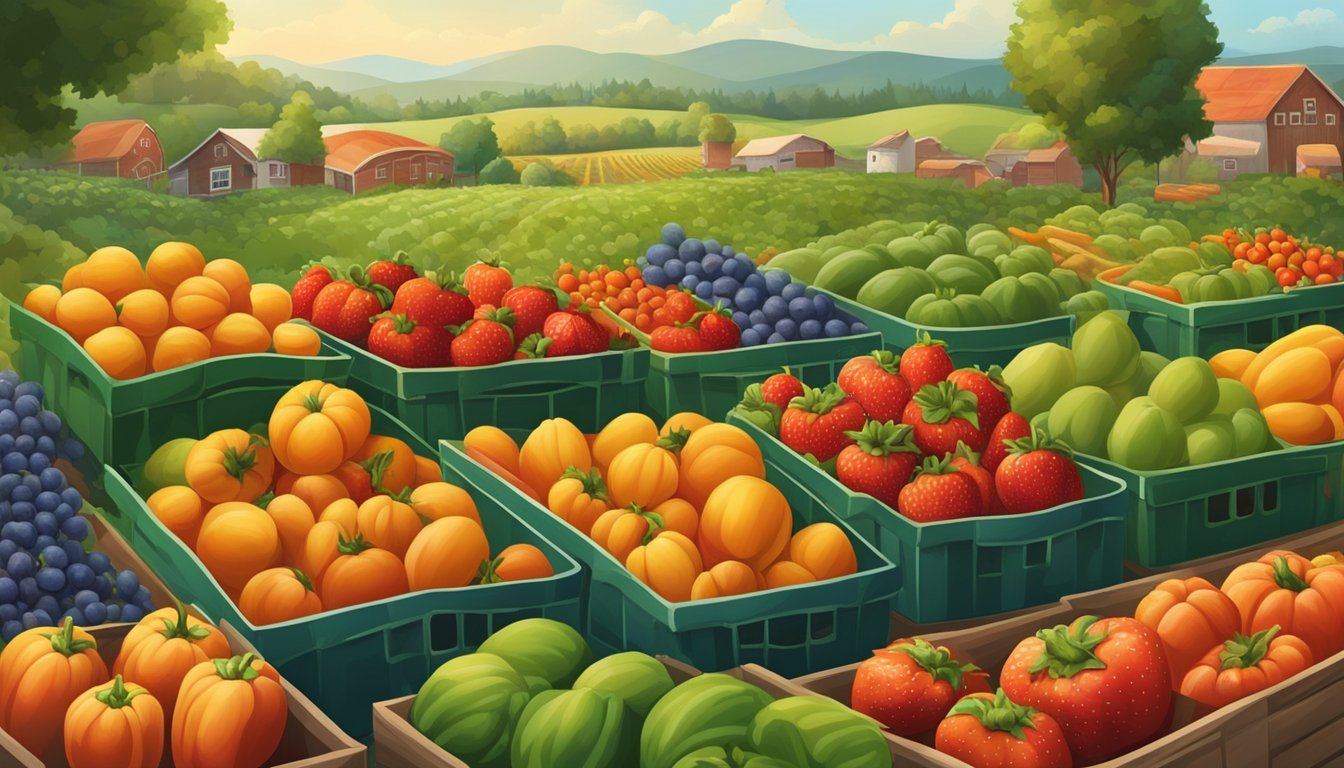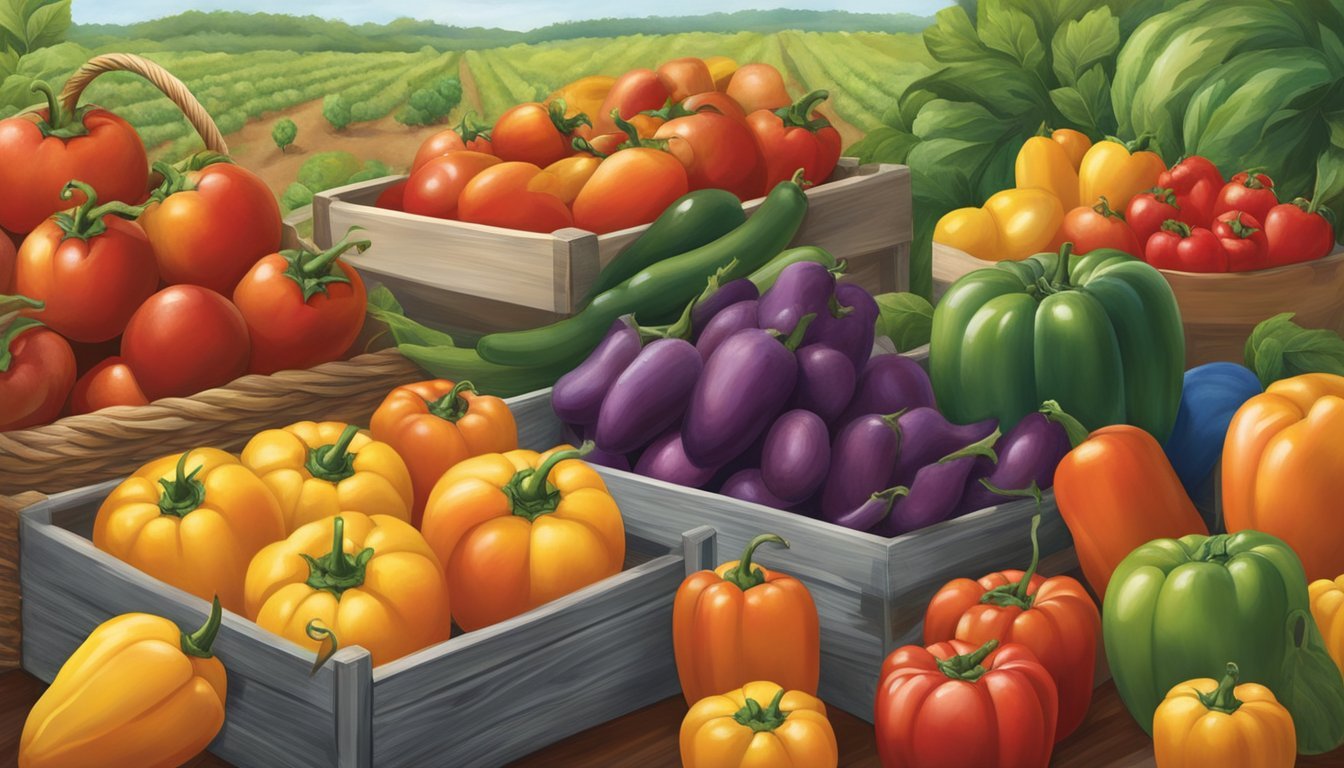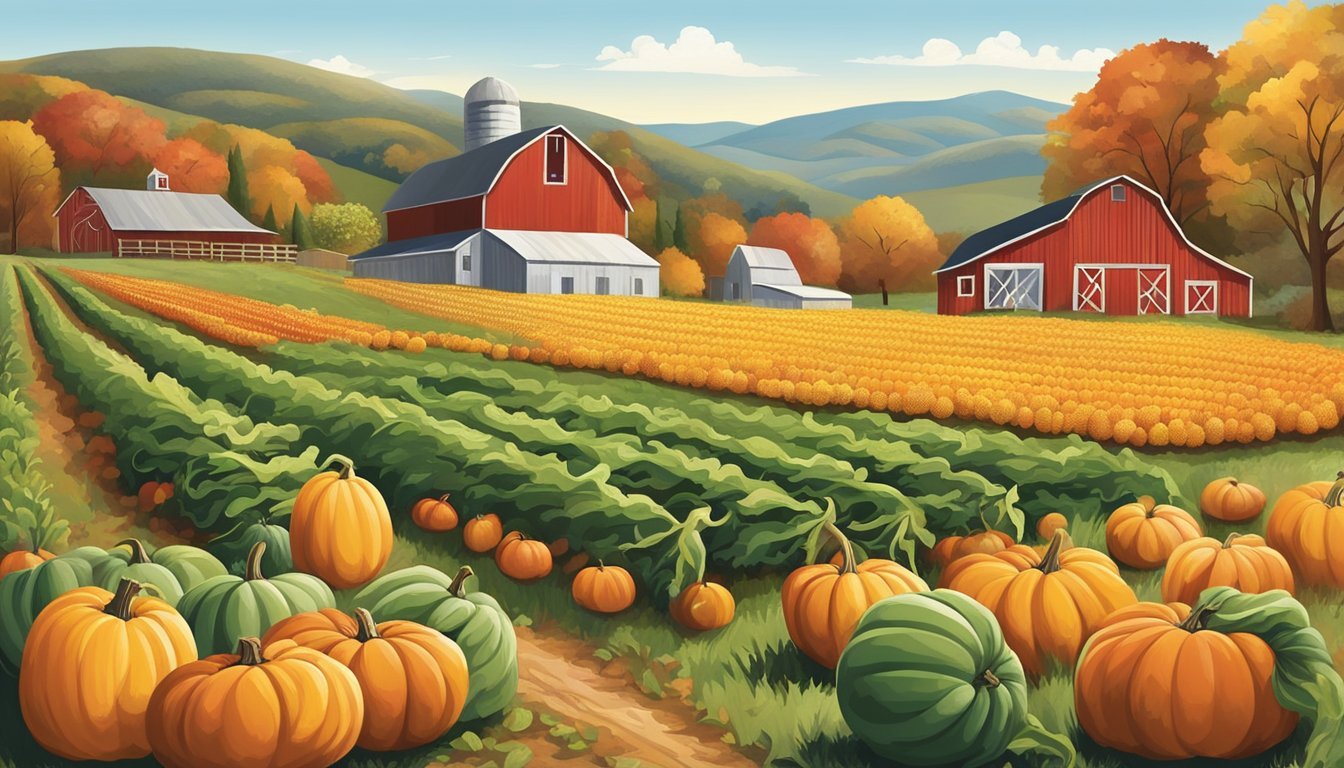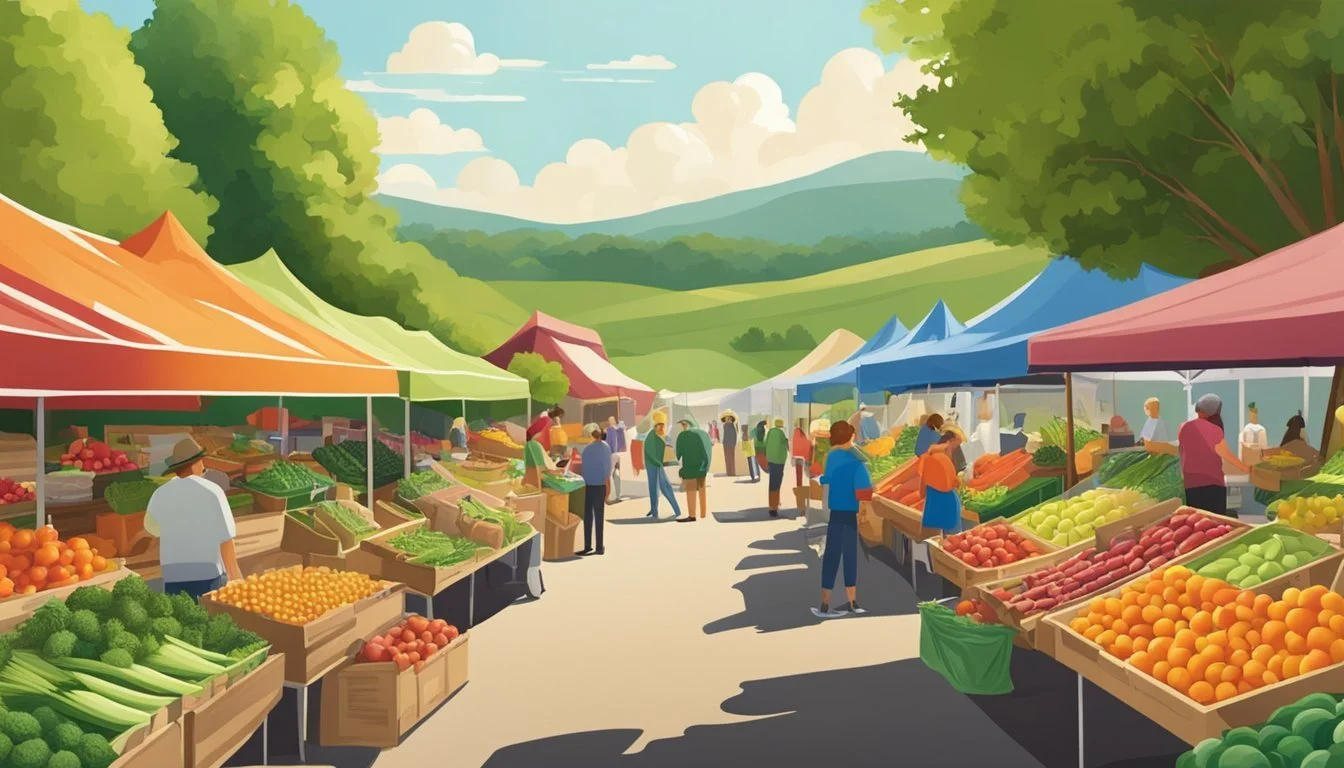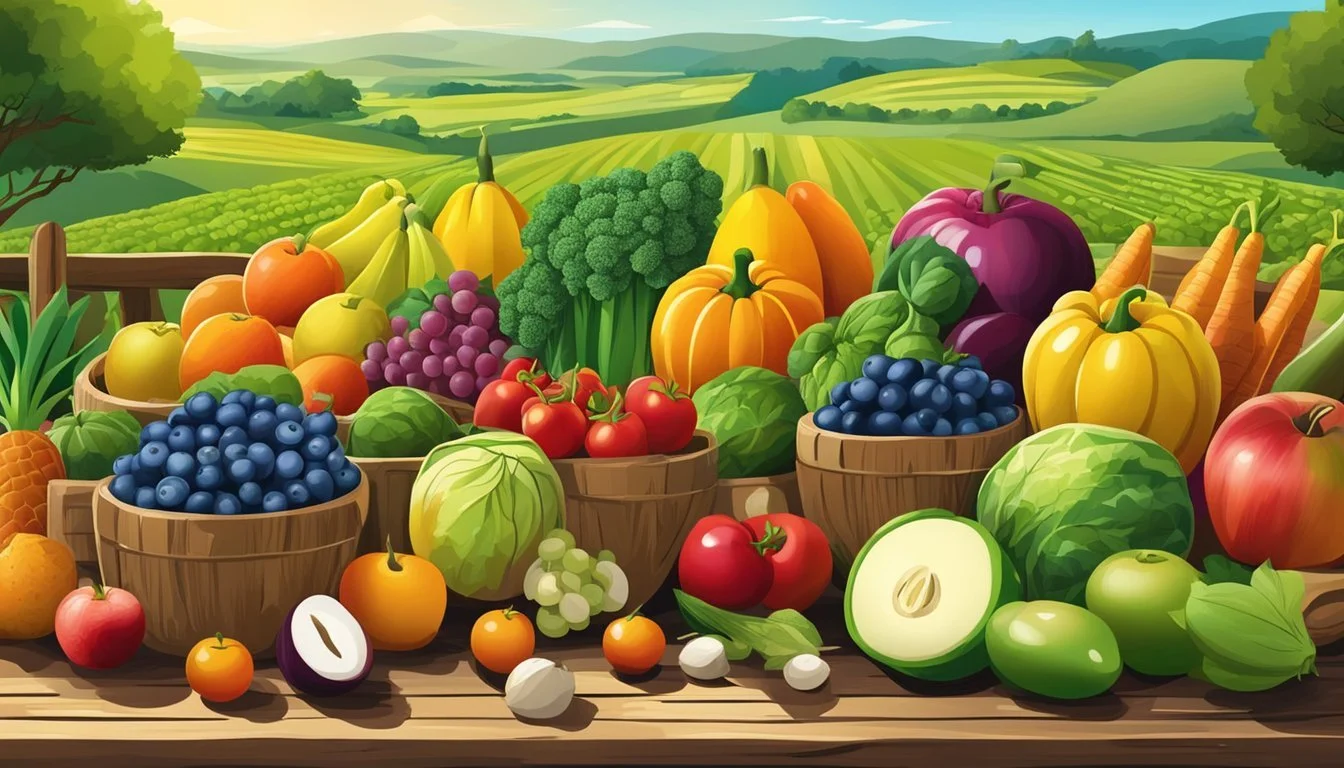North Carolina Seasonal Fruit & Veg Guide
Your Essential Harvest Calendar
North Carolina's commitment to farm-to-table ideals shines throughout the year as each season brings its own selection of fresh produce directly from local farms to the tables of residents and restaurants across the state. This approach not only supports the local economy but also ensures that consumers enjoy fruits and vegetables at their peak of freshness and nutritional value.
With a climate and soil that support a wide variety of crops, North Carolina farmers are able to cultivate an impressive assortment of fruits and vegetables that are supplied to local markets and dining establishments. Consumers who align their shopping habits with the seasonal availability of produce benefit from the rich flavors and textures that only come from fruits and vegetables harvested at the right time.
Understanding the seasonal produce calendar is essential for anyone looking to tap into the freshest and most flavorful ingredients North Carolina has to offer. From the tender asparagus (how long does asparagus last?) spears in spring to the juicy peaches in summer, and the hearty greens in fall, North Carolina's agricultural bounty is both diverse and bountiful, perfectly aligning with the farm-to-table philosophy that celebrates sustainability and local cuisine.
What’s in Season in North Carolina Right Now?
The Importance of Seasonal Eating
Seasonal eating supports a natural agricultural cycle, offering peak nutrition and supporting local economies while lessening environmental burdens.
Nutritional Benefits
Fruits and vegetables harvested during their appropriate seasons contain optimal levels of nutrients. This is because they are picked at their peak ripeness, when they are most dense in vitamins and minerals. For instance, watermelon harvested in July will be richer in nutrients compared to those grown off-season using artificial methods.
Environmental Impact
Choosing seasonal produce directly reduces the demand for out-of-season goods, which often require excessive water and pesticides to grow. Seasonal crops align with the environment’s natural offerings, reducing the ecological strain. Water usage is optimized to what is naturally available, minimizing the ecological footprint. Also, buying from local farmers cuts down on transportation emissions, as the distance from farm to table is substantially shorter.
Economic Advantages
From an economic perspective, seasonal fruits and vegetables can cost less due to the decreased need for transportation and storage. Local farmers benefit financially from increased demand for their in-season produce, strengthening community economies. Buying seasonal produce supports a system where the cost reflects the true availability and scarcity of resources, encouraging sustainable consumer behavior.
Understanding North Carolina's Growing Seasons
In North Carolina, the climate and location greatly influence the distinct growing seasons. Gardeners and farmers must understand these seasonal cycles to maximize their harvest of fruits and vegetables throughout the year.
Spring
Spring in North Carolina is characterized by its short days and cool temperatures. This period is optimal for planting a variety of leafy greens and root vegetables. Crucial to this season are:
Lettuces
Spinach
Carrots
Radishes
Temperatures gradually increase, and by late spring, one can also start sowing seeds that require warmer weather.
Summer
The summer months bring long days and high temperatures, offering ideal conditions for fruit-bearing plants. The state's summers allow for the successful growth of:
Tomatoes
Squash
Cucumbers
Peaches (in peak season between June and September)
Farmers and gardeners must ensure adequate watering during this season, as plants can become stressed due to the intense heat.
Fall
With the arrival of fall, North Carolina experiences a shift to shorter days and cooler temperatures once again, suitable for a second round of crops that thrive in these conditions. Crops to focus on include:
Broccoli (how long does broccoli last?)
Cauliflower
Apples (how long do apples last?)
These conditions can extend or even improve the harvest period for many summer crops as well.
Winter
While winter is not peak growing season, some hardy vegetables can still be nurtured, such as:
Kale
Brussels Sprouts
These cold-tolerant plants can survive the frost-prone climate, especially in the milder coastal regions of the state.
Spring Seasonal Produce
The spring harvest in North Carolina offers a refreshing variety of produce. As the weather warms, local farms begin to present an array of crisp vegetables and sweet fruits worthy of any farm-to-table meal.
Fruits
Strawberries: These ruby gems start appearing in April and can be found until June, signaling the sweet start of seasonal fruit harvests.
Vegetables
Asparagus: With a short season from March to April, asparagus is a sought-after springtime delicacy.
Greens: A broad category that includes spinach and various types of lettuce, offering greens almost year-round with peaks in the spring.
Peas: Typically found fresh in the markets from April to May.
Radishes: Known for their peppery flavor, radishes are an early spring crop available from April through June.
Summer Seasonal Produce
Summer in North Carolina brings a bounty of fresh, flavorful produce that peaks in quality and taste. Consumers can look forward to vibrant fruits and an array of crisp vegetables during this season.
Fruits
Peaches: Typically available from June through September, peaches are a juicy highlight of the summer. They reach their peak ripeness during these months, offering a sweet flavor and abundant nutrients.
Blueberries: These nutrient-rich berries are ready for harvest from May to July, making them a summer staple for both fresh eating and preserves.
Watermelon: Synonymous with summer picnics, watermelons are best enjoyed from July to August when they are most flavorful and hydrating.
Muscadine Grapes: July to October is the season to relish these distinctively Southern grapes that thrive in North Carolina's climate.
Vegetables
Tomatoes: Summer is the prime season for tomatoes, with the fruit (botanically classified as such) being at its most succulent from June onwards.
Cucumbers: From June to mid-August, cucumbers are in abundance. They are perfect for refreshing salads or as a crunchy snack.
Sweet Corn: Ears of sweet corn are at their sweetest between June and September, making it the ideal time to enjoy this summer barbecue favorite.
Okra: This warm-weather vegetable comes into season from mid-July to August and is often featured in Southern dishes.
Fall Seasonal Produce
Fall in North Carolina brings a bounty of produce, marking a transition from the light fruits and vegetables of summer to more hearty and robust autumnal fare. This season is ideal for enjoying a range of colorful and nutritious fruits and vegetables that thrive in the cooler weather.
Fruits
Apples: With varieties like Gala, Fuji, and Honeycrisp reaching maturity, visitors can enjoy apple picking from late August through February. Orchards across the state offer a multitude of apple varieties, perfect for pies, ciders, or eating fresh.
Muscadine Grapes: These native Southern grapes are typically harvested from July through October and are a sweet addition to North Carolina's fall fruit offerings.
Vegetables
Pumpkins: Synonymous with fall, pumpkins are available from September and often adorn doorsteps as well as dinner tables in a myriad of dishes.
Sweet Potatoes: One of the state's most prominent crops, sweet potatoes reach their peak during the fall months and are a versatile component in kitchens.
Kale: This cold-hardy vegetable becomes sweeter after a frost and is harvested throughout the fall season, providing a nutritious green for salads and side dishes.
Broccoli: Best planted in late summer to early fall, broccoli matures in cool weather, making it a staple fall vegetable that's typically ready for harvest in October and November.
Each of these produce items embodies the essence of North Carolina's fall season, inviting locals and visitors alike to partake in the state's rich agricultural offerings.
Winter Seasonal Produce
Winter in North Carolina offers a delightful variety of produce that not only tolerates the cold weather but also thrives in it. This season is ideal for hearty vegetables and certain fruits that add freshness to the winter palate.
Fruits
Citrus Fruits:
Grapefruits
These fruits are known for their vibrant flavors and are packed with Vitamin C, perfect for boosting immunity during colder months.
Vegetables
Root Vegetables:
Turnips: Available into February, turnips provide earthy flavors and can be used in stews and soups.
Leafy Greens:
Collards: A Southern staple, collards are hearty and flavorful, offering nutrients through the chilliest months.
Winter Squash:
Varieties such as butternut squash (how long does butternut squash last?) are excellent for roasting and create a comforting addition to winter meals.
Where to Find Local Produce
In North Carolina, a variety of local produce can be found through multiple channels that support the farm-to-table movement. These outlets provide fresh and seasonal fruits and vegetables directly from the source.
Farmers Markets
Farmers Markets are a staple for sourcing local produce in cities like Raleigh, Durham, Chapel Hill, and Asheville. These markets bring together a diverse network of local farmers, offering a wide range of seasonal fruits and vegetables.
Raleigh Farmers Market: Operates year-round with a broad selection of local goods.
Durham Farmers Market: Known for its strict policy of local-only vendors.
Chapel Hill Farmers Market: Provides seasonal produce unique to the Piedmont region.
Asheville City Market: Features goods from the mountain agricultural community.
CSAs
Community Supported Agriculture (CSA) programs allow individuals to subscribe and receive regular deliveries or pickups of produce from local farms. This model supports local farmers directly and ensures that consumers receive the freshest seasonal produce.
Example CSA Programs:
Farm Fresh: Offers a variety of subscription boxes ranging from vegetables to meats.
Harvest Cooperative: Curates selections of produce based on what's in season.
Local Farms
Visiting local farms in North Carolina is another option for finding fresh, seasonal produce. Many farms operate farm stands or participate in farm-to-table networks.
Farm Stand Locations:
Sweetberry Farm: Known for strawberries and summer berries.
Green Hill Farm: Offers a wide range of heirloom vegetables.
Local farms often form the backbone of the farm-to-table movement, partnering with restaurants and markets to deliver fresh food to consumers across the state.
How to Select and Store Fresh Produce
Selecting and storing fresh produce correctly is crucial when embracing a farm-to-table lifestyle. It ensures that the fruits and vegetables retain their flavor, nutritional value, and freshness from the moment they are harvested until they reach the dinner table.
Selection Tips
When choosing fresh produce, one should look for vibrant colors and firm textures, indicators that the produce is at its peak of freshness. For instance, peaches should be firm to the touch with a sweet fragrance, a sign they have been picked at the right time. For vegetables like broccoli, uniform green color without any yellowing spots is desirable.
Each item often has its unique indication of ripeness:
Tomatoes: Slightly firm and deep in color
Cucumbers: Dark green without wrinkles or soft spots
Blueberries: Deep blue with a light dusty bloom
Storage Guidelines
Proper storage extends the shelf life of produce while maintaining its quality. Fruits and vegetables can have vastly different storage needs.
Produce Type Storage Guideline Soft Crabs (how long does crab last?) Refrigerated immediately; consume within days. Clams (What wine goes well with clams?) Stored in a cool, well-ventilated area. Summer Squash Kept in the fridge; best if used within a week. Apples Cool, dark place or refrigerated for longevity.
Seasonal produce should be consumed close to the time of purchase to enjoy its freshest state. They generally require cool, dry places away from direct sunlight to preserve freshness and prevent spoiling. Certain produce like squash and root vegetables (e.g., turnips) can be stored for longer periods in a cool, dark pantry or cellar, while others like lettuce and herbs need refrigeration in a high humidity drawer for prolonged freshness.

